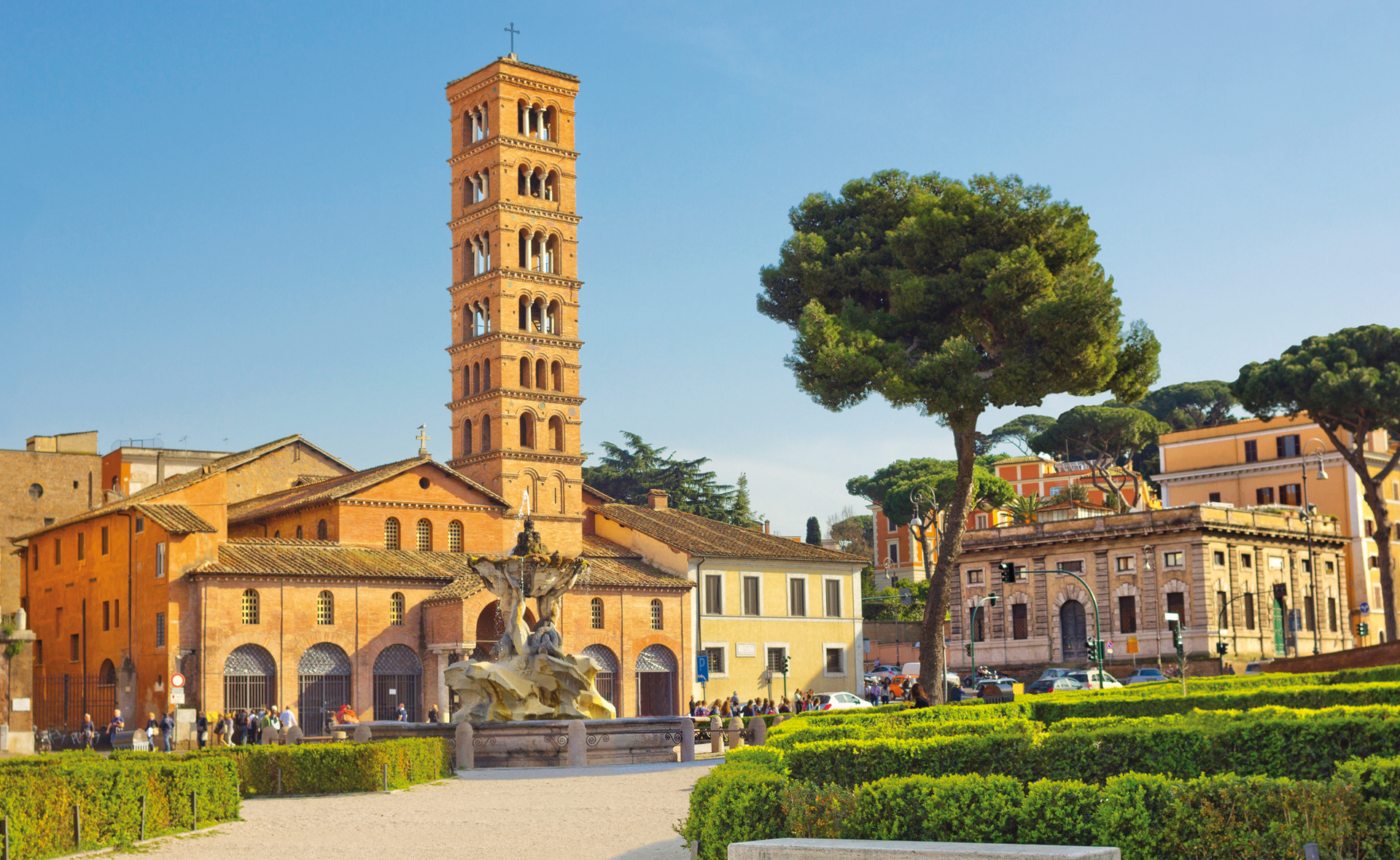This area of Rome tells the story of the city from its beginning: the Velabro.

Legend has it that the Urbe was founded by Romulus in the area between the Palatine and Capitoline hills, known today as Velabro. This area – at that time swampy and often flooded (“velus”, in fact) – is where the basket containing the mythical twins Romulus and Remus ran aground. And it is here where the story of Rome began.
In this area rich in history is the Basilica of Santa Maria in Cosmedin. Often, tourists can be seen queuing up in the basilica’s narthex waiting to put their hands into the famous Bocca della Verità, an ancient drain covering in the form of a grotesque mask. According to tradition, people suspected of being criminals were obliged to put a hand into its “mouth”: if they were innocent, they remained unharmed, but if they were guilty, they would be bitten.
The Basilica of Santa Maria in Cosmedin was built on top of a 3rd-century pagan temple. It’s impossible to overlook the fine bell tower. At over 34 metres high, it rises to the right of the church’s façade, divided into 7 double and triple-mullioned floors topped with a “Roman-style” four-pitched roof with a cross on top.
Near the basilica you can see the four-sided Arch of Janus dating back to the mid-4th century. The name derives from the Latin “ianus” (“covered passage”) and “ianua” (“door”), and therefore does not refer to the two-faced divinity. It was erected in the middle of one of the branches of the Cloaca Maxima, on the edge of the Forum Boarium, and provided shelter to merchants engaged in purchase negotiations.
Beside the arch is the Alda Fendi Foundation – Experiments, a project by star architect Jean Nouvel, which houses an exhibition gallery and 24 suites.
Behind the Arch of Janus, one can see the 6th-century Church of San Giorgio al Velabro, which is decorated with marvellous apsidal frescoes attributed to Pietro Cavallini. Next to the portico of the church is the Arcus Argentariorum (3rd century) which, as stated in the inscription on the architrave, was built by the «argentarii et negotiantes boari huius loci», i.e. the Boari bankers and merchants. Important temples were constructed in the Forum Boarium, a sacred and commercial area of ancient Rome.
The circular Temple of Hercules Victor (commonly called Temple of Vesta) – which once housed the “sacred eternal flame”, symbol of the continuity of life in Rome – and the Temple of Portunus (or of the “Fortuna Virilis” ) are still visible today. This temple was later transformed into a Christian church. Inside, the early medieval frescoes depicting the stories of the “Life of the Virgin” have miraculously been saved as a unique testimony of the genre.
